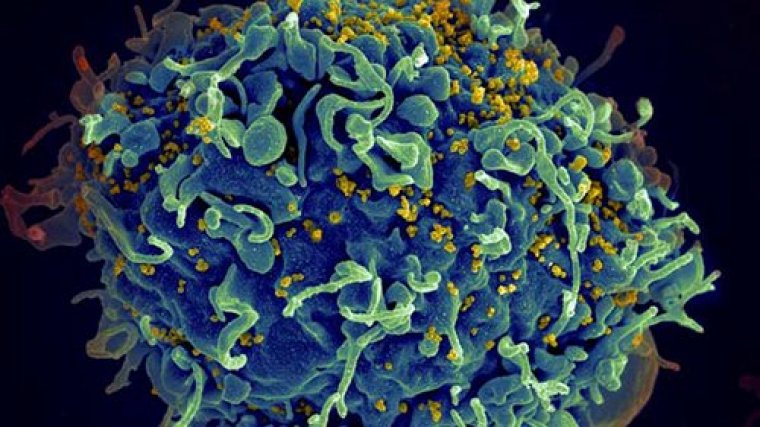| Health / Health News |
HIV can spread early, evolve in patients’ brains
NIH | APRIL 7, 2015
The AIDS virus can genetically evolve and independently replicate in patients’ brains early in the illness process.

HIV, the AIDS virus (yellow) infecting a human immune cell. ![]()
An analysis of cerebral spinal fluid (CSF), a window into brain chemical activity, revealed that for a subset of patients HIV had started replicating within the brain within the first four months of infection. CSF in 30 percent of HIV-infected patients tracked showed at least transient signs of inflammation – suggesting an active infectious process – or viral replication within the first two years of infection.
There was also evidence that the mutating virus can evolve a genome in the central nervous system that is distinct from that in the periphery.
These results underscore the importance of early diagnosis and treatment with antiretroviral therapy. Any delay runs the risk that the virus could find refuge and cause damage in the brain, where some medications are less effective – potentially enabling it to re-emerge, even after it is suppressed in the periphery.
YOU MAY ALSO LIKE


